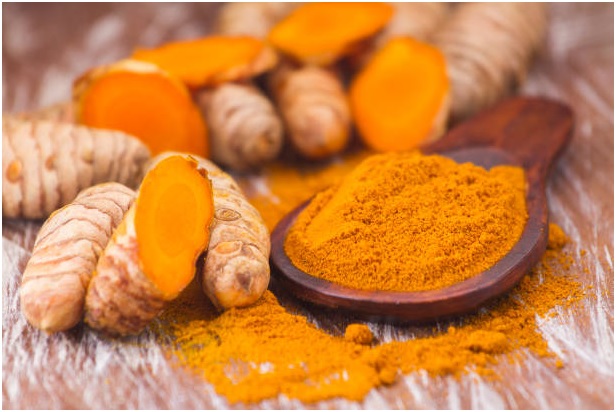Turmeric is one of Indian spices which has incredible health benefits. Turmeric powder is used in almost every dish like curries. It gives an appealing color and also enhances the nutritional profile of every food. Its nutritional benefits are beyond the limit as it has bioactive compounds that act as naturally occurring anti-inflammatory compounds.
The powdered form of turmeric is considered as a spice. Fresh or raw turmeric has increased usage in winters to overcome many seasonal issues. It is similar to ginger roots. A natural form of anything contains more nutritional value than any processed form, and it is identical to turmeric.
Here we will discuss the difference between them and how you can use them in your daily routine.
Fresh turmeric
Fresh turmeric roots are similar to ginger roots. It has more flavor as compared to dried powder form.
It has bright orange flesh with an earthy outer surface. It has a peppery and bitter taste. You can scrape off the outer layer, but it depends on its maturity and tenderness. You can use fresh turmeric in many ways by cutting it into cubes or grating it with cheese graters. You can also extract its juice and use it in smoothies.
It is available in almost all the grocery stores, especially in Indian stores. Select firm and tender turmeric instead of soft and shriveled pieces because they have lost moisture. You can easily store it in the refrigerator by packing it in airtight containers or bags for several days.
Turmeric powder
Turmeric powder is available in grocery stores, and you can also prepare it by yourself. Take fresh turmeric, peel, boil, and dry it. You can dry it in sunlight or dehydrator. Turmeric powder loses its essential nutrients and pungency in dehydration, but it has a similar color and warmth. Once you have dried turmeric roots, you can grind it by spice grinder to get a fine powder.
Many grocery stores have freshly-powdered turmeric so that you can purchase from them. Aroma and color is the indicator of the best quality of turmeric powder.
Fresh Turmeric powder also has a yellow to orange shade. You can store powder for years in airtight containers.
Why is fresh turmeric good for you?
Fresh turmeric is a bright orange root-like subtrainian stem (aka a rhizome) that is famous for its powerful anti-inflammatory, antioxidant, and antibacterial properties. A member of the ginger family, it has been used for centuries in Indian Ayurvedic and Chinese medicine to heal wounds, treat skin conditions, inflammation and infection.
Also known as Indian saffron, Jiang Huang, Haridra or turmeric, as its powder it often ticks in the spice cupboard and is brought out when curry is called for a specific shot of yellow is. The main active ingredient is curcumin and research has shown lower rates of certain types of cancer in countries where people eat curcumin for a longer period of time.
In the same way that its relation to fresh ginger is different from dried ginger, so it is also fresh turmeric. Dried turmeric is made by peeling, boiling, drying, and grinding rhizomes – some of it loses essential oils and punch but still provides warmth and color.
How do I prepare fresh turmeric?
To prepare fresh turmeric, chop the skin by holding the vegetable peel or knife. You can also rub the stem backwards with a spoon. Once you have indicated the color, clay and tongue-numbing insulation, it is ready to use as you wish – finely chopped or grated (it is less fibrous than ginger and Easy to grate).
Word of warning though – its incredible color is a natural dye and stains surfaces and hands alike. Handle with care or get your marigold if you want to avoid dye (you can use lemon juice to help remove stains). When it comes to know how much to use, a rough guide is: One inch fresh turmeric = one tablespoon freshly ground turmeric = one teaspoon ground turmeric.
Can you use fresh turmeric in place of turmeric powder and vice versa?
Organic turmeric has bright color and perfect flavor as well. You can use powder form instead of fresh to get the flavor and color, but it’s obvious to have some differences. You need to adjust the quantities of your recipe when you want to substitute both of them.
Fresh turmeric has moisture, which is a significant drawback when you want to use it as a powder form. If you grind fresh turmeric, it will result in paste form, similar to grated type. So it will not be helpful if you want to use it in curry as a dry powder. Drying is the best solution to get powder form, and for that, you can use an oven or food dehydrator at home. Use three times of fresh turmeric in place of powder form to get similar results.
